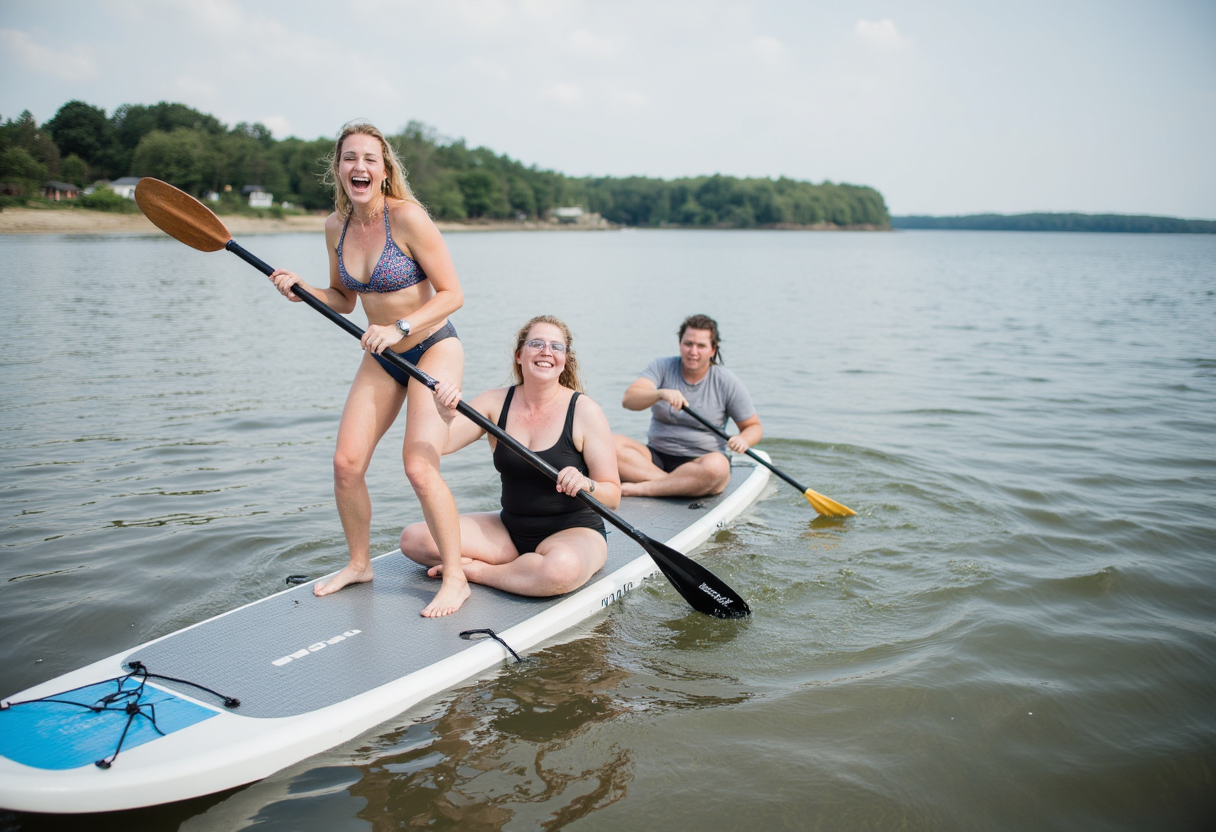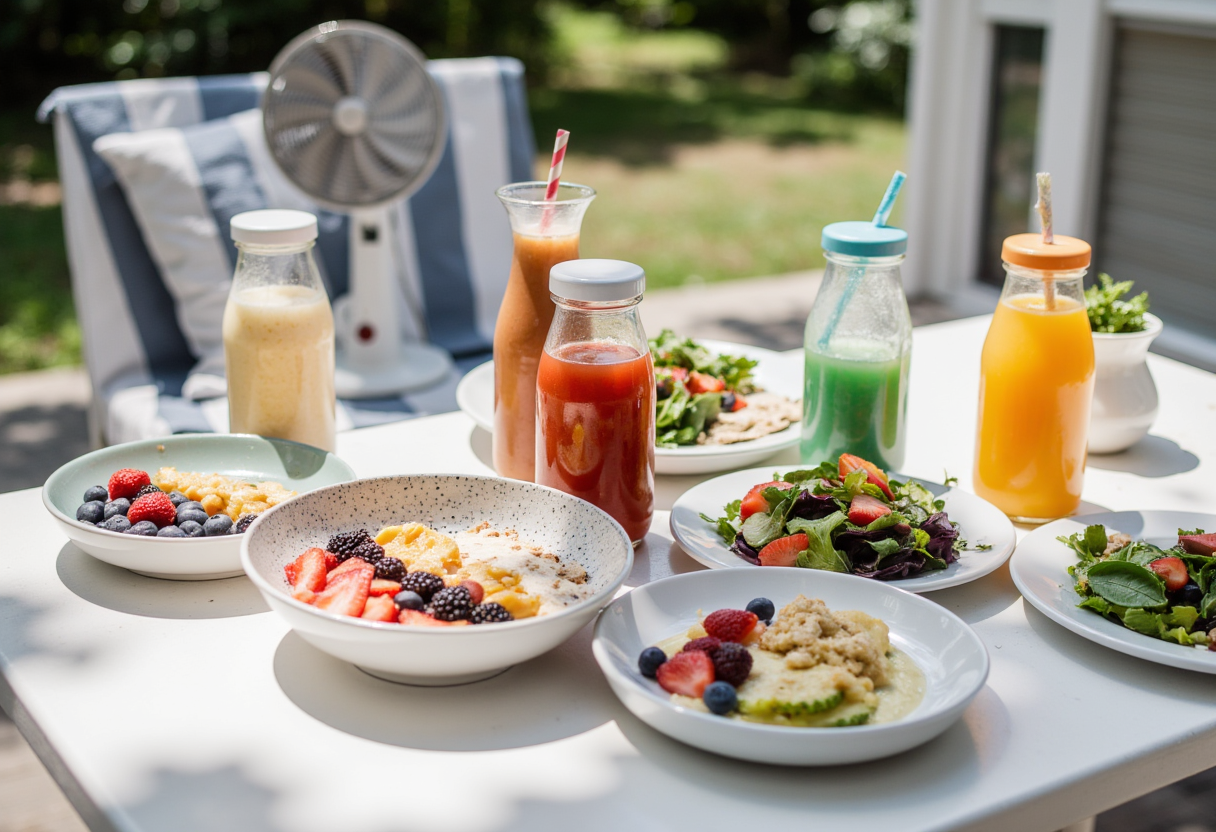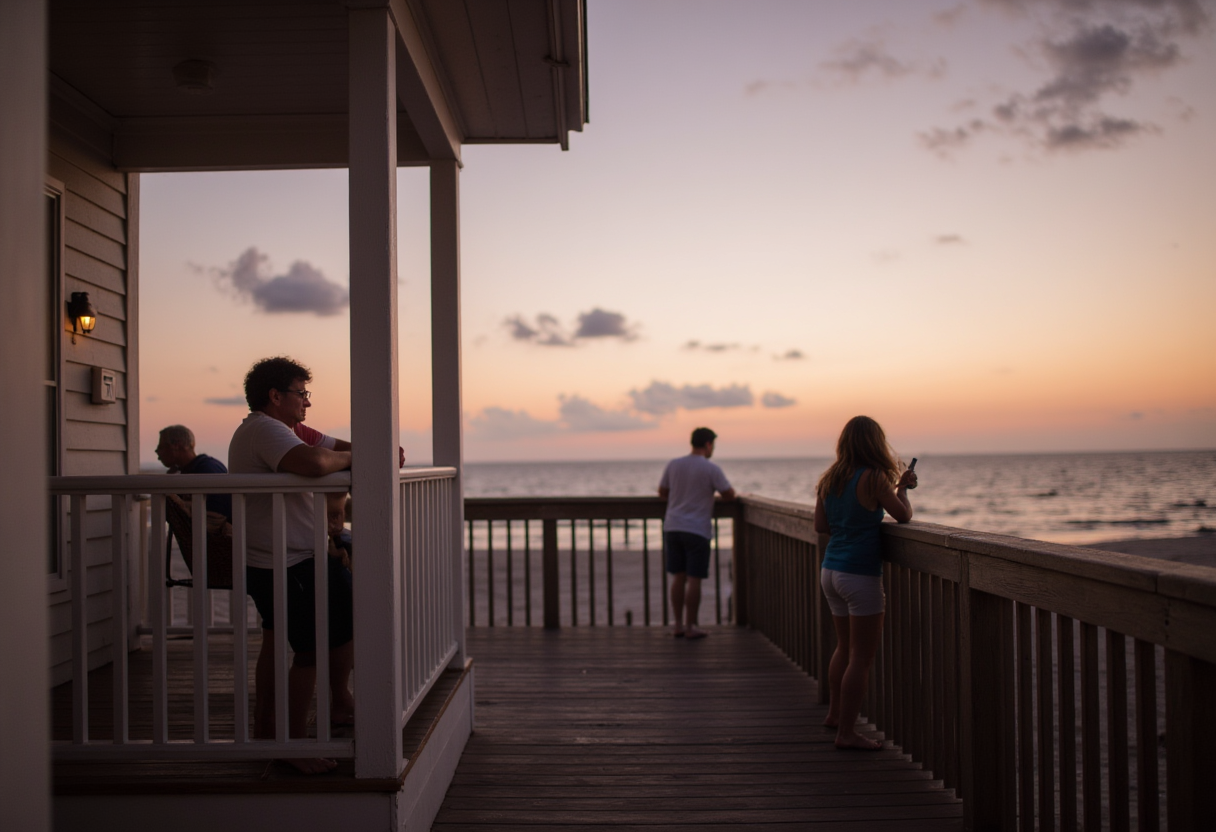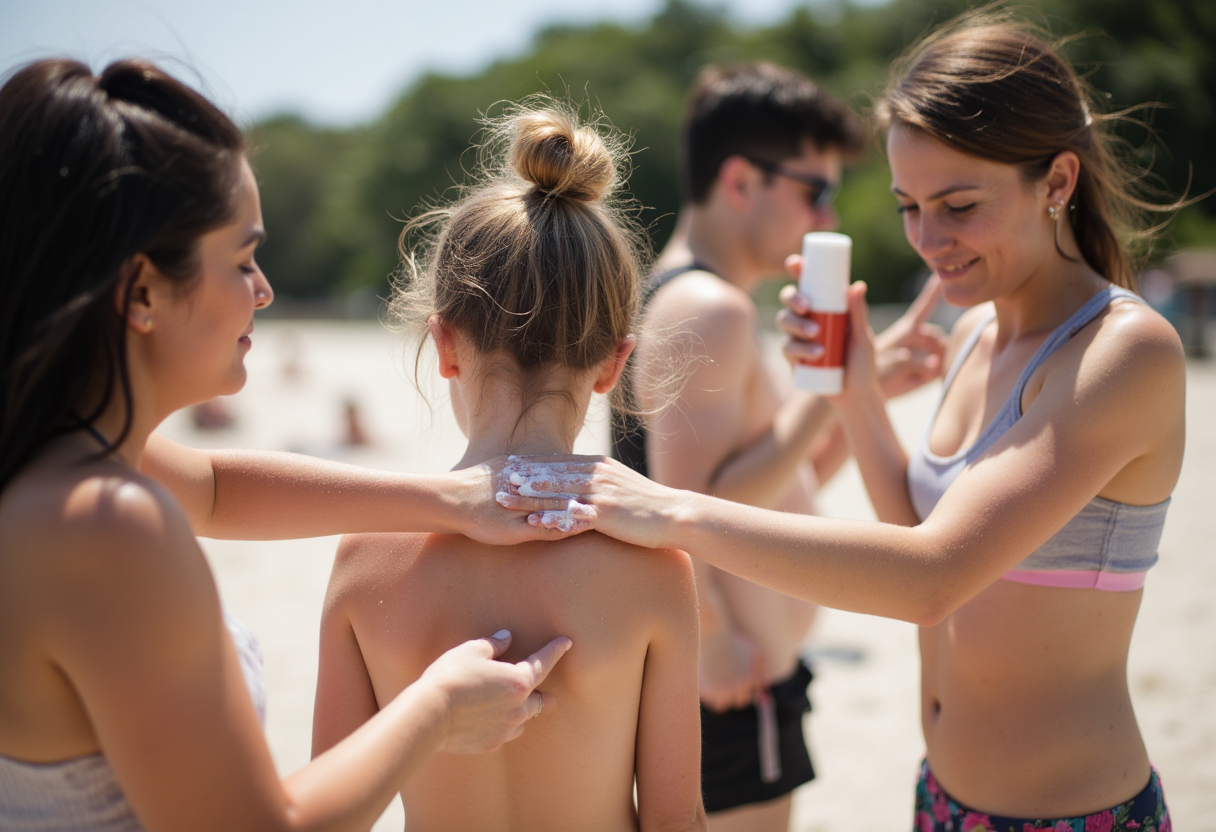How to Survive a Florida Summer: A Native's Ultimate Guide
Practical, tested tips from a resident to help you stay cool, safe, and comfortable all summer.
Evolution
Grocery pickup and delivery services have quietly become one of the best ways to stay cool during a Florida summer. Scheduling a midday pickup or having groceries delivered means fewer stints across parking lots that feel like pizza ovens and no more worrying whether a car handle will blister your hand. Plan errands for early morning or late afternoon whenever possible to cut your direct sun exposure and heat exposure time.
Apps and Technology
Today’s weather apps and alert tools make it easier to monitor dangerous conditions—many provide heat advisories, UV index warnings, and real-time lightning maps.
You don’t need every feature, but install one reliable app (for example, the National Weather Service app or a local lightning-tracking feed) and set custom alerts so you know when the heat or storms are getting serious.
A practical rule of thumb: if the heat index approaches triple digits (for example, around 100–110°F), treat outdoor plans as optional and prioritize shade, fans, or air conditioning. Download a lightning/heat-alert app and set thresholds that trigger notifications—this is an easy way to stay informed and stay cool when you’re deciding whether to head to the park or reschedule outdoor time.
The Unchanged Essentials
Some basics never go out of style for surviving a Florida summer: sunscreen, timing, hydration, and lightning awareness. Dermatology guidance recommends at least SPF 30 for daily sun protection—apply a broad-spectrum SPF 30+ sunscreen every morning and reapply approximately every two hours, or immediately after swimming or heavy sweating.
Timing your outdoor time is one of the simplest ways to stay cool and reduce sun exposure. Aim for outdoor activity in the early morning or late afternoon; avoid the 10 AM–4 PM window when UV and ambient temperature typically peak. If you must be outside during midday, prioritize shade, a wide-brim hat, and frequent breaks in air-conditioned spaces or under fans.
Hydration is equally non-negotiable—carry a water bottle and sip frequently. For most adults in hot conditions, drinking small amounts regularly (for example, a 20–32 oz bottle consumed across a few hours) helps maintain body temperature and prevent heat exhaustion; increase fluids if you’re active or sweating heavily, and include electrolyte drinks when appropriate.
Lightning safety remains critical—Florida is frequently cited as the lightning capital of the U.S. (National Lightning Safety Council). Follow the golden rule: when thunder roars, go indoors. Use weather apps to monitor lightning in real time and move inside at the first sign of thunder, rather than waiting until a storm seems imminent.
Quick "Before You Go Out" checklist: sunscreen SPF 30+, refillable water bottle, hat and light cover-up for shade, plan for fans or AC breaks, and a lightning/heat-alert app on your phone. These small steps cut down your risk, help you stay cool, and make outdoor Florida summer days manageable.
Food for Thought (And Cooling)
The food scene has adapted to help you stay cool during a Florida summer—think light, hydrating options that require little to no cooking.
Where we once grabbed whatever cold item we could find, now there’s a whole market for “cooling” foods: açai bowls, cold-pressed juices, and abundant salad bars are easy ways to lower the metabolic heat load on your body while you enjoy the day.
Practical, hydrating choices keep your body temperature down: watermelon, cucumbers, citrus, and other water-rich fruits; smoothies or cold-pressed juices; and electrolyte drinks if you’re sweating a lot. If you choose an alcoholic beverage—yes, a cold beer at the beach is tempting—balance it with extra water since alcohol can dehydrate.
Packing tips for a park or beach outing: use an insulated cooler or bottle to keep drinks cold, bring a towel and a light cover-up for shade, and plan meals that don’t require heating. A 20–32 oz refillable water bottle is an easy way to ensure you sip frequently and stay hydrated throughout the day.
A visually appealing spread of "cooling foods" on a shaded patio table. Think colorful açai bowls with fresh fruit, vibrant cold-pressed juices
Quick "What to Eat & Drink" list: water-rich fruits (watermelon, oranges), cooling salads, iced electrolyte drinks, and chilled snacks. These small switches are a simple way to stay cool and keep enjoying Florida summers without overheating.
The Insect Situation
Repellent technology has come a long way since the days of heavy DEET sprays—today you have effective alternatives like Picaridin, oil of lemon eucalyptus (for adults), and even permethrin-treated clothing for trips where bugs are relentless. Check CDC or EPA guidance when choosing products, especially for children.
How to use repellents smartly: apply according to the product label, reapply as instructed (often after heavy sweating or swimming), and avoid applying repellent to cuts, irritated skin, or under clothing. For clothing and gear, permethrin-treated items are useful—treat shoes, socks, and outer layers (not skin) for longer-lasting protection.
Do/Don't quick list: DO remove standing water around your yard, DO use screens and a lightweight cover-up at dusk, DO keep a small spray in your bag for evening walks; DON'T rely on citronella candles as your only line of defense, and DON'T assume fans alone stop mosquitoes—while fans can reduce bites by dispersing CO2 and sweat, mosquitoes in Florida's humidity can still be persistent.
Practical tip: keep a travel-size spray and a light towel or long-sleeve cover in your bag for twilight outings—these small steps reduce exposed body surface and cut the chance of bites during humid summer evenings.
Embrace the Madness
The truth is, surviving any Florida summer takes a little acceptance — and a lot of planning. You’re living where the air can feel like a warm, wet blanket, and the weather will push your comfort limits for months on end.
There’s a strange, defiant joy in that: a “take that, nature” attitude that turns enduring the heat into part of the local way of life. Modern conveniences make it easier to stay cool, but the smartest approach mixes technology with sensible habits.
Mindset tip: schedule the hard stuff for early morning or late afternoon, socialize indoors during peak heat, and treat the midday hours as your downtime for errands, AC, and recovery. Practical gear — moisture-wicking shirts, a wide-brim hat, a light towel, and a refillable water bottle — is your heat survival kit. These small choices help your body cope with rising temperature and humidity so you can still enjoy summer activities.
Final Survival Tips
Top priorities for surviving a Florida summer: hydrate, cover up, stay cool, and stay informed. Use a reliable weather alert (for example, the National Weather Service) so you know when heat advisories or lightning threats are active—Florida weather can shift from pleasant to dangerous fast.
A serene Florida sunset. The sky is painted with soft hues of orange and purple
Hydration first: carry a 20–32 oz refillable water bottle and sip regularly—aim to drink small amounts often rather than chugging. Increase fluids and include an electrolyte drink if you’re sweating heavily or exercising in the heat to help your body regulate temperature and avoid heat exhaustion.
Dress & cover: wear light, moisture-wicking clothing, a wide-brim hat, and use a towel or light cover-up when you need shade. Apply broad-spectrum sunscreen SPF 30+ and reapply every two hours, or after swimming or heavy sweating.
Manage time & temperature: avoid strenuous activity during the 10 AM–4 PM window when sun and temperature peak. Schedule park visits or outdoor time for early morning or late afternoon to stay cool and comfortable.
Use fans vs. AC smartly: fans can help at low-to-moderate heat, but when temperatures and humidity are high, air conditioning is the safer cooling method to reduce body temperature.
Watch for heat illness: know the signs—dizziness, heavy sweating, nausea, confusion—these can indicate heat exhaustion; high body temperature, altered mental state, or fainting may signal heat stroke and require emergency care.
Respect lightning: when thunder is heard, go indoors immediately. Don’t wait for rain—move to a sturdy building or hard-top vehicle and avoid open park areas, pools, and metal objects.
Pack a simple survival kit: a refillable bottle, small towel, sunscreen (SPF 30+), hat, and a lightweight cover-up will get you through most outings.
group of people (could be a family, friends) at a beach or park, diligently applying sunscreen
These are practical, repeatable ways to stay cool in the face of Florida summer heat and humidity. With a little planning—hydration, shade, good timing, and awareness—you can enjoy summer activities without putting your body at unnecessary risk.
Welcome to Florida: summer here is more than a season—it’s a lifestyle. Keep your water bottle close, your towel handy, and your weather alerts enabled. Respect the lightning, monitor the temperature, and you’ll make it to October in one piece (and maybe with a few great beach memories).
Earl Lee
Florida Unwritten





